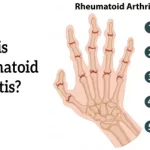They say people only realize the value of what they have when they lose it, which is true in most cases. This old adage is especially relevant when it comes to aging and its effect on bone and joint health.
We are told to eat the right food, get enough sleep and exercise while we’re young, but how many actually follow this sage advice? Then we wonder, a little too late in life, when our bones and joints begin to ache, or worse, when we have already been diagnosed with rheumatism, arthritis or osteoporosis.
This doesn’t have to happen to you because there are certain steps you can take to ensure you do not suffer in the future and subject your body to expensive medication and painful procedures. Caring for your bones and joints should start now, and the steps are fairly simple.
1. Be a weight-watcher
No, you need not be weight-obsessed, stick-thin or even slim, just try to maintain a healthy weight that’s right for your age. Keeping excessive weight gain at bay through exercise, healthy eating and weight management supplements is not just beneficial to your load-bearing joints (ankles, knees, hip, back). It is also good for the body overall as it will ensure you do not suffer from obesity and all the health problems that come with it.
To motivate you more, know that whenever you walk on a level surface, your knees are subjected to a force that is equal to 1 1/2 times your own body weight. How many pounds more will that be if you carry excess weight? Ouch!
2. Get a move on
Being physically active and exercising regularly are not necessarily the best means of weight control, especially if you chow down more calories than you lose when you exercise. But the real benefit lies in how weight-bearing exercises such as high-impact aerobics, tennis, jogging, running, basketball and dancing compress your bones and essentially make them stronger.
Strengthen your core by including exercises that are centered on your abdominals as well as your back muscles. These help ensure better posture and balance so you are not prone to falls that could hurt your bones and joints.
Also, integrate other muscle strengthening exercises into your routine (body weight exercises, lifting, etc.) to ensure your joints don’t get overloaded, and for better bone support. Being immobile or sedentary, on the other hand, will ensure you suffer from stiff joints and backaches.
3. Keep a record of past wrongs
If you have had a history of fractures before, then you are highly likely to suffer from the same in the future, especially if you do not take care of your body now. Know the limits of what you can and cannot do, especially in terms of physical activity and exercises.
Instead of going for high-intensity exercise, go for low to moderate impact routines like Pilates and yoga, swimming and jogging.
4. Take C for calcium
We have always known we need calcium to grow big and strong since childhood. But growing up doesn’t excuse us from making sure we get adequate calcium to ensure our bones and joints remain strong and compact. Calcium-rich food include milk and dairy products, kale, watercress, broccoli, dried figs, bok choy, sardines and almonds as well as soy milk.
You may also be required to take calcium supplements with vitamin D as the daily requirement for calcium increases with age.
5. Daytime for D
Remember how your grandpa used to take you out into the sunshine where you were still a kid? He sure knew what he was doing because vitamin D is needed for calcium absorption. And while the best vitamin D source is sunshine, there are also food sources you can add to your diet to ensure you get enough of this vitamin. These include cheese, fatty fish such as tuna, salmon and mackerel, beef liver, cod liver oil, mushrooms and eggs.
6. Limit caffeine and alcohol
If you already have trouble keeping your calcium intake at the required levels, do not add to your problem by drinking caffeinated beverages like soda and coffee, and alcoholic drinks, as they have already been proven to adversely affect bone health.
Rather than drinking restricted beverages, stick to drinking water on top of milk or other calcium-rich substitutes.
7. Go smoke-free
Aside from the surgeon general’s warning about smoking being the leading cause of lung cancer and emphysema, puffing away is also bad for your bones and joints. It has already been proven that using tobacco and tobacco products leads to the loss of bone mineral density, which is essentially brittle bones making you prone to osteoporosis.
With this new (and old) information at hand, there really is no excuse for you to ignore the call to good health. Protecting your bones and joints and the rest of your body is a lifelong exercise, and should ideally start as early as childhood.
Remember that there are no shortcuts to good health, and the earlier you begin taking care of yourself, the greater the benefits you will reap in the future. Commit to these steps today and be on your way to a life well lived.
REFERENCES:
- Why weight matters when it comes to joint pain
- Long-term Coffee Consumption in Relation to Fracture Risk and Bone Mineral Density in Women
AUTHOR BIO
Gehana Kennedy is the owner of vitaminshop.ae, the go-to source for high-quality wellness products including a range of step-by-step formulated vitamins, fitness supplements and natural skin care products. With innovative ideas and implementation of new technologies, she was able to establish a platform that offers not only quality products but also valuable information for customers.








